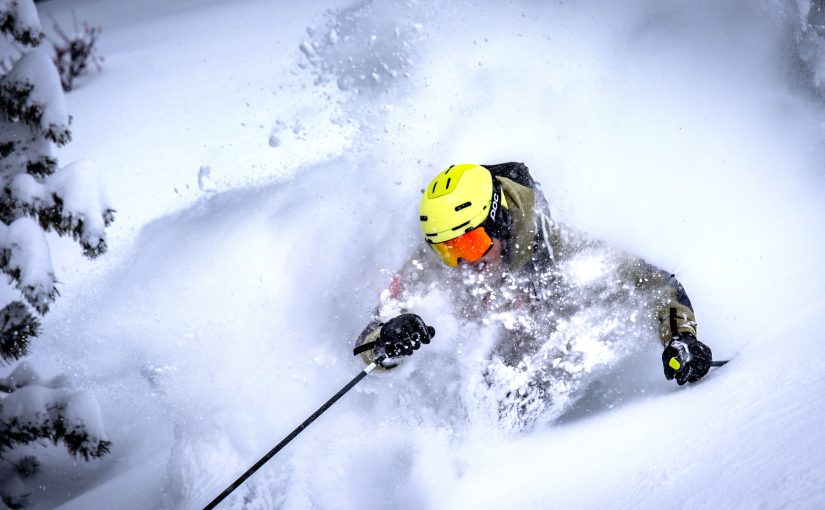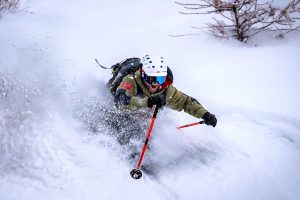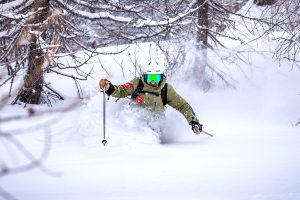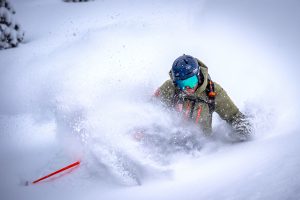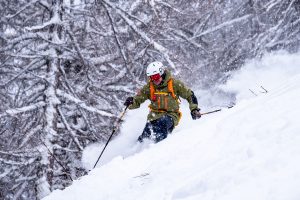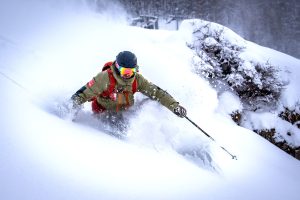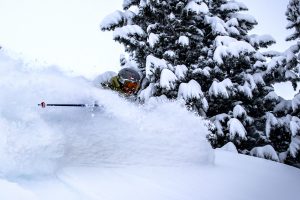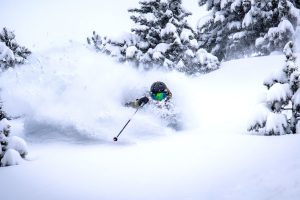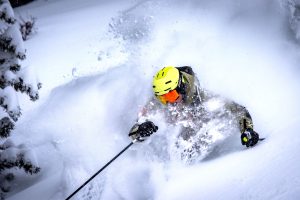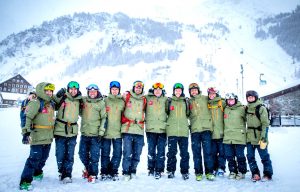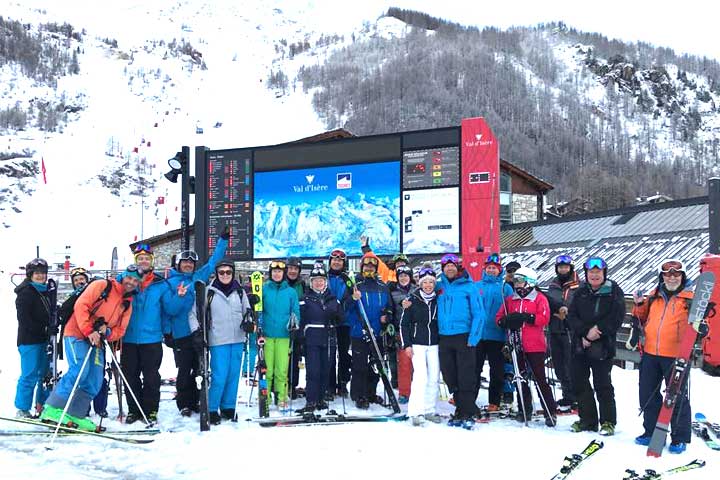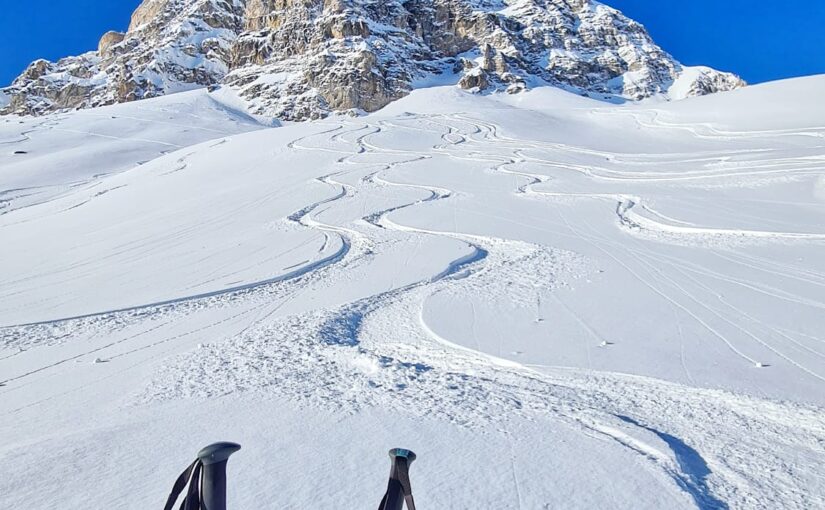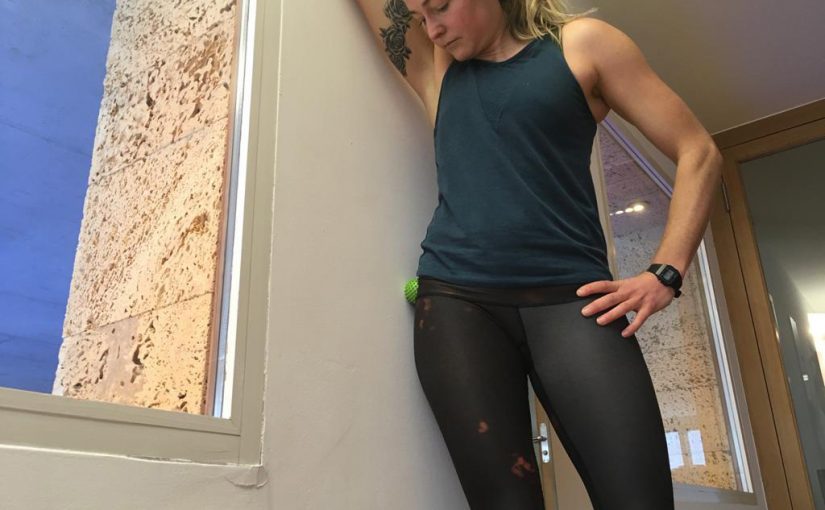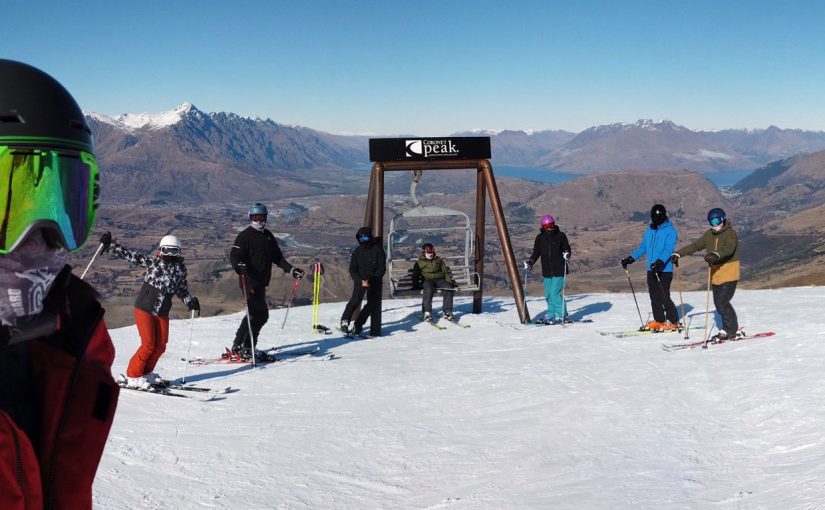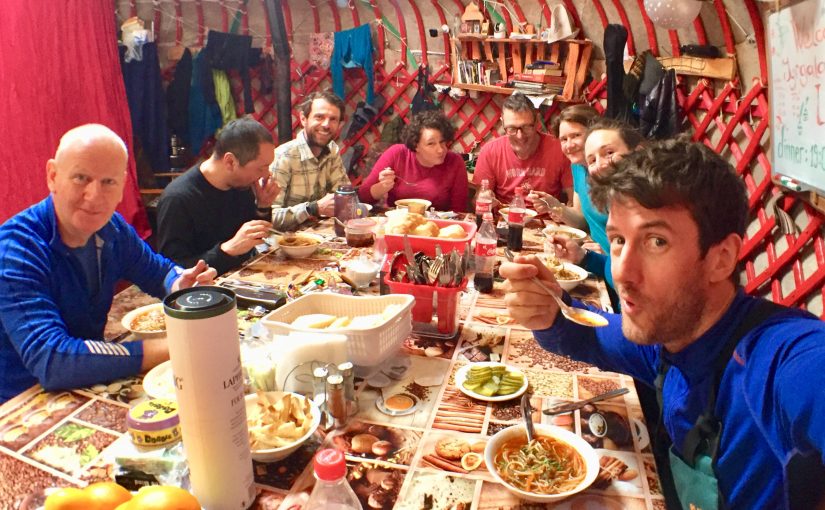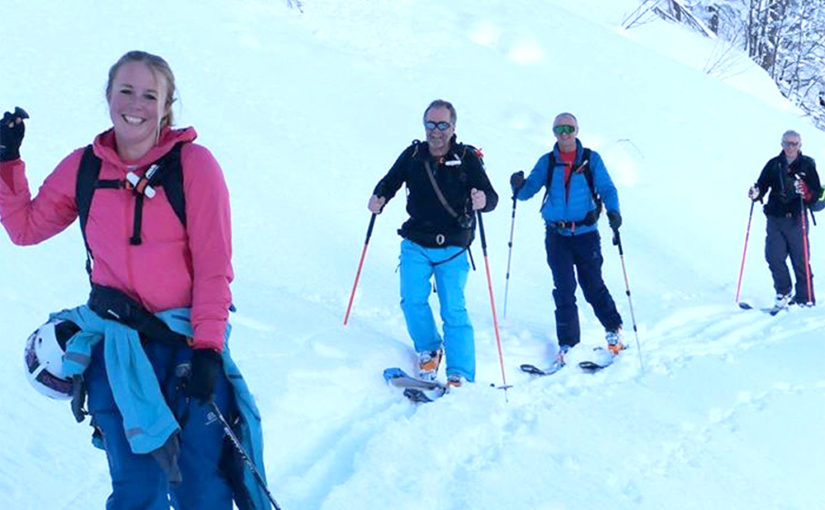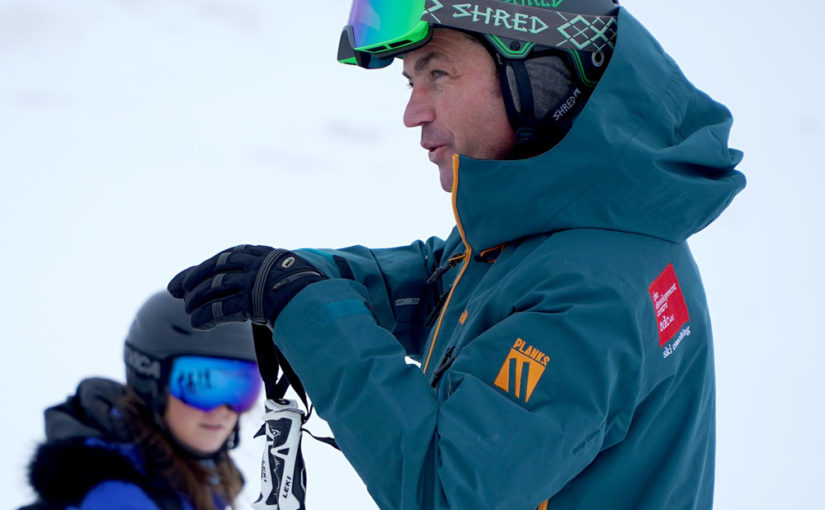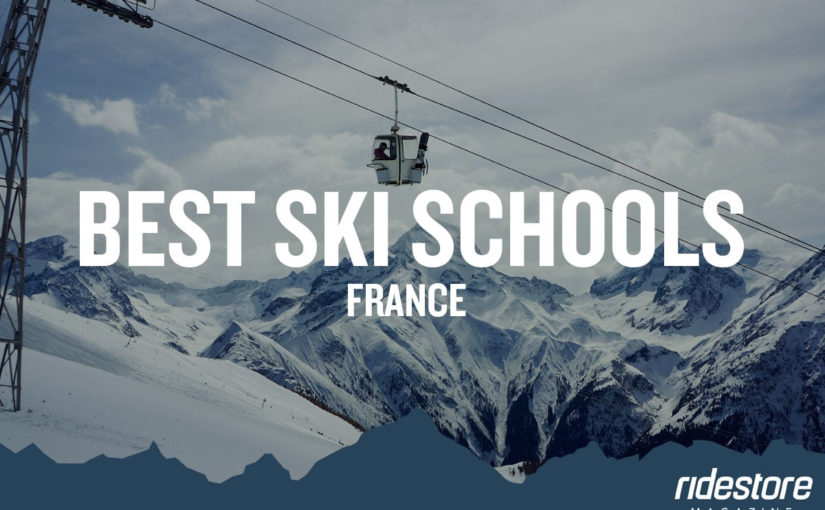Have a look at some of the great images we got on Val d’Isere opening day 2nd Dec 2023.
Photo Credits – Tony Wilkinson Photography
Category: ski lessons val d’isere
December Ski Camps with TDCski
Every December TDCski run early season ski camps.
For December 2022 the dates are
28th Nov – 2nd Dec 2022
5th – 9th Dec 2022
€430 per person
Why do an Early Season Clinic?
Val d’Isere and Tignes are renowned for exceptional early season snow conditions. So it made perfect sense to us to run, at low season prices, some of our tried and tested Clinics. You and get the best tuition, and training, in a fun and friendly environment.
As coaches at TDCski when we all came through our pathways to becoming instructors and trainers, we were personally always geared up to get in some early season training, and we realised that you get some of the best skiing and personal develop during these times.
It really gets your season started and sets you up for success.
What Are Early Season Clinics?
5 half days of training
Small Group Sizes
Maximised Personal Development and Coaching
Not Done a TDCski Clinic Before?
What should you expect?
Here’s a Sample weekly plan to give you a taste…..
Development Level for strong RED run skiers. Below gives you an idea of the benefits and the weekly progression that you will enjoy when taking part in a 5 day early season clinic.
09.00 – 12.00 Monday
- Rediscover ski legs and develop confidence
- Establish group and individual goals
- Focus on finding the middle of the ski – stance and posture
- Control your speed and line – refresher on how we turn
09.00 – 12.00 Tuesday
- Develop better rotary skills to tighten your turns and deal with difficult areas of the mountain (ice, narrow sections etc.)
- Increase control and accuracy in short radius turns
- Develop more discipline controlling rotary movements of the upper body
09.00 – 12.00 Wednesday
- Develop better lateral movement to improve edging skills
- Carving – technique and tactics
- Use the equipment better to reduce effort and increase enjoyment
09.00 – 12.00 Thursday
- Consolidate skill development
- Apply skills to ski steeper slopes and more challenging terrain
- Apply skills to ski non-groomed snow
09.00 – 12.00 Friday
- Consolidate skill development
- Attend to any goals not yet achieved
- Turn on the style and let rip!
What Level Of Skier Do I need to Be?
We have a range of clinics to suit your skiing ability and objectives
Discovery Clinic: For strong blue run skiers…
Development Clinic: For strong red run skiers….
Development Plus Clinic:For strong red run /ok black run skiers…
Challenges Clinic: For strong black run skiers…
How To Book A December Ski Camp
email us now
[email protected]
or call
0033 (0)615553156
or
WhatsApp
Spring Skiing Can Be Hard To Beat
2022 Snow Conditions
Fantastic Snow Conditions
We all know that Val d’Isere/Tignes is one of the highest resorts in Europe and therefore benefits from the early and late snow conditions every year. This season has been no exception, we had a huge amount of snow the first week of December which laid a fantastic base for the season. The only exception (!) was 2 weeks ago when it rained up to 3000m and caused us a week of trouble in the off-piste. The most recent storm has laid a nice layer of powder on top of that and ensured good skiing for the rest of the season.
Currently On Piste
There is wall to wall groomers!
Even La Face is in beautiful condition at the moment, the injected ice from the World Cup is long gone, leaving grippy snow on top (gets a little scraped in the late afternoon)
All other slopes are open and remain corduroy until late afternoon with the lack of traffic.
Currently Off Piste
The recent snow last week has left a layer of powder on the East, South and West faces at all altitudes. Though a while back now, an experienced instructor will be able to find some fresh tracks.
Alternatively, ski touring is a great option and get lots of fresh tracks.
The resort is extremely quiet off-piste.
Check Out Some Videos
Are You Fit & Ready For The Slopes To Open?
Whether you’re lucky enough to be touring in the mountains or making the most of daily outdoor exercise in the UK with some running, we’re making the most of the lockdown so we’re fit and ready for the slopes to open!
We’ve teamed up with the wonderful Jo Pollard, a Physiotherapist based in Val d’Isere and Tignes who specialises in ski and snowboard injuries and injury prevention. Jo is currently busy working with the New Zealand women’s World Cup racing team, so we’re thrilled that she’s put together some top tips for activation before you head out running or touring.
If you’d like any more info or some personalised advise, get in touch with Jo at https://jopollardphysio.com/
With the lockdown continuing in many places, a lot more people have taken to running recently. And those of us who are lucky to live in the mountains are hitting the touring hard.
After hearing some grumbles from clients/friends, I have put together a few pre mountain or pre-running activation tips.
There are of course many exercises and things you could/should/would do, but here are 5 exercises that should take no longer than 5 minutes (unless you’re enjoying them and want to do more 🙂 )
They are a quick combo of release work and activation to try and encourage the often lazy muscle groups to get going and try to dampen down/switch off some of the overactive ones.
This is, of course, different in people, but the trends are often overactive, tight hip flexors and tensor fascia latae (TFL) (especially when touring long periods with extra weight on your feet). And sometimes lazy/under-active gluteal muscles.
Try spending 30sec-60secs with foam rolling/trigger point ball releasing the tighter muscle groups, then about the same amount of time ‘waking up’ or ‘activating’ the glut and stability muscles (i.e core and feet muscles).
Here are 5 exercises that should take no longer than 5 minutes…
Jo Pollard
1) TFL or Hip Flexor Release
Here a small massage trigger ball is ideal, but a tennis or golf ball etc will do. Depending on where you find the ‘spot’ place the ball against the wall and lean your weight into it. If trying to target the TFL (the small triangular shape ‘meaty’ bit muscle just over/infront of the hip joint) place the ball here. To target more the hip flexor at the front, you can lie stomach down and place the ball just below the pelvis (ASIS) and hip.
At first it may feel quite uncomfortable, but try to breathe slow and deep, and the discomfort should ease and release.
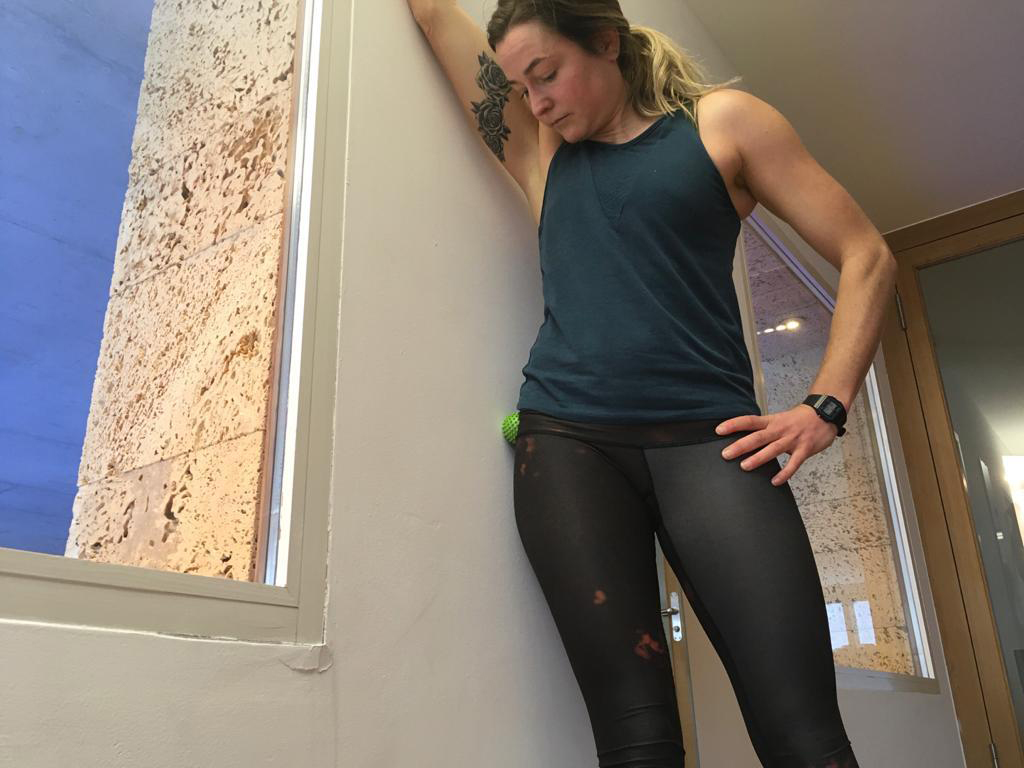
2) Foam Roller Release
So not the most comfortable thing to try and release, but try and ‘roll’ up and down the whole length of the outer leg (top of hip all the way to the knee).
Try and keep your core engaged and reap the extra benefit of getting your core going too!
If you really struggle with upper body strength, you can place the roller against the wall (at different heights along your outer leg) – then lean all your body weight into it.
Move the roller along the leg.
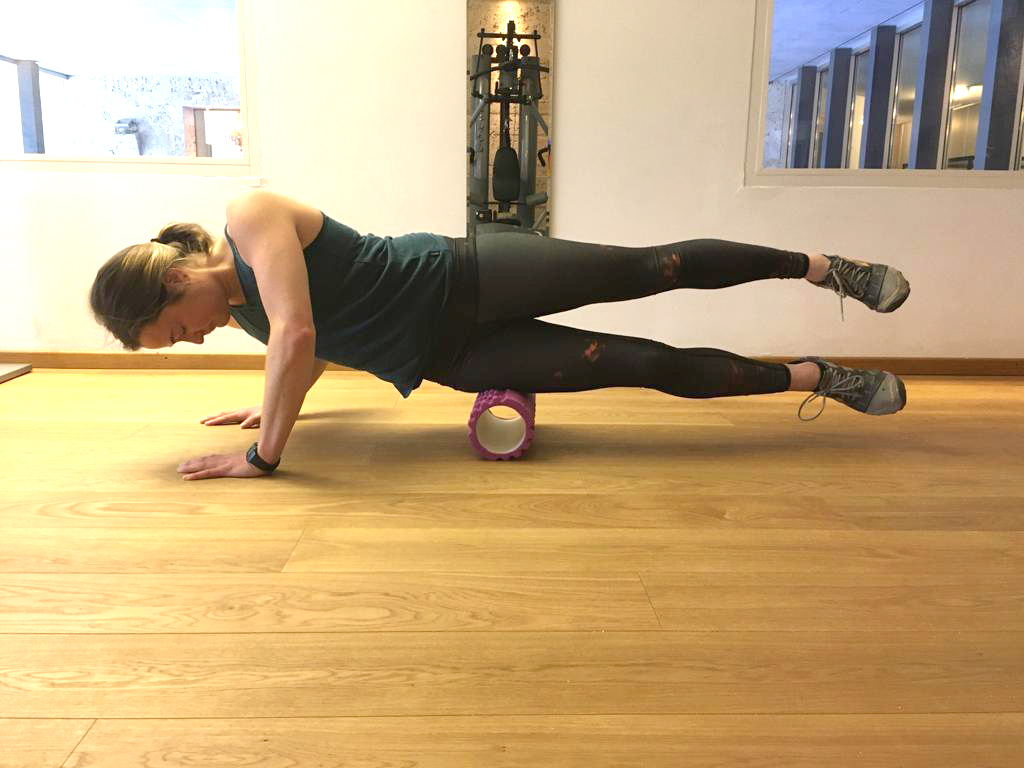
3) Glute Activation 1
If you have some theraband that is ideal, but if not you can still connect and focus on activating your gluts without.
Start either stood up or as I am here with a slight forward lean (but keeping spine neutral and core engaged).
Keep the static leg soft and aligned over your second and third toes.
Take the moving leg out sideways, and slightly behind.
Try to not let the toes turn out and open up – this gives your hip flexors more chance of firing when the aim is to get the gluteus medius working (i.e your pelvic stabiliser).
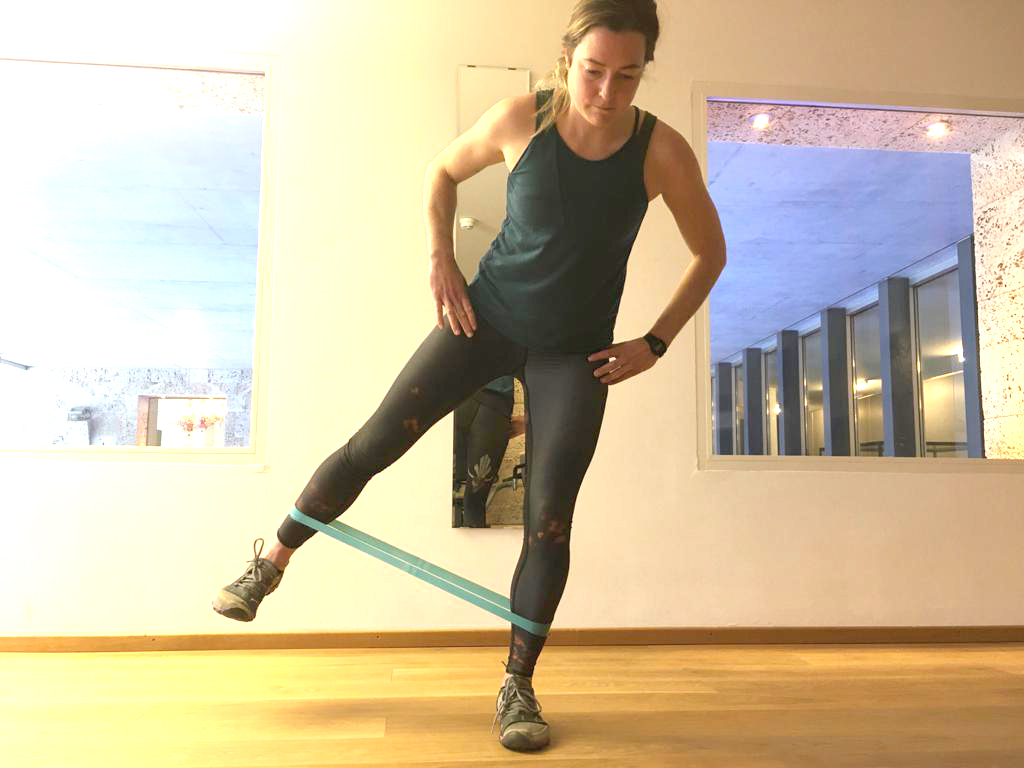
4) Glute Activation 2
Here we are trying to get the glut max firing, one of the main hip extensors which will help you propel forwards with power and efficiency in both touring and running.
Start again lined up, with a slight forward lean, but core engaged and spine neutral. Try not to let the pelvis twist, or allow the lower spine to give into extension, allowing the lower back muscles to over dominante the movement.
It also helps to keep the moving leg relatively straight, to not allow the hamstrings to kick in too much.
If you’re familiar with pilates this movement is a little bit like single leg kick.
To really make sure the gluts are the prime mover, think to do a mini ‘butt’ squeeze first before moving into extension.
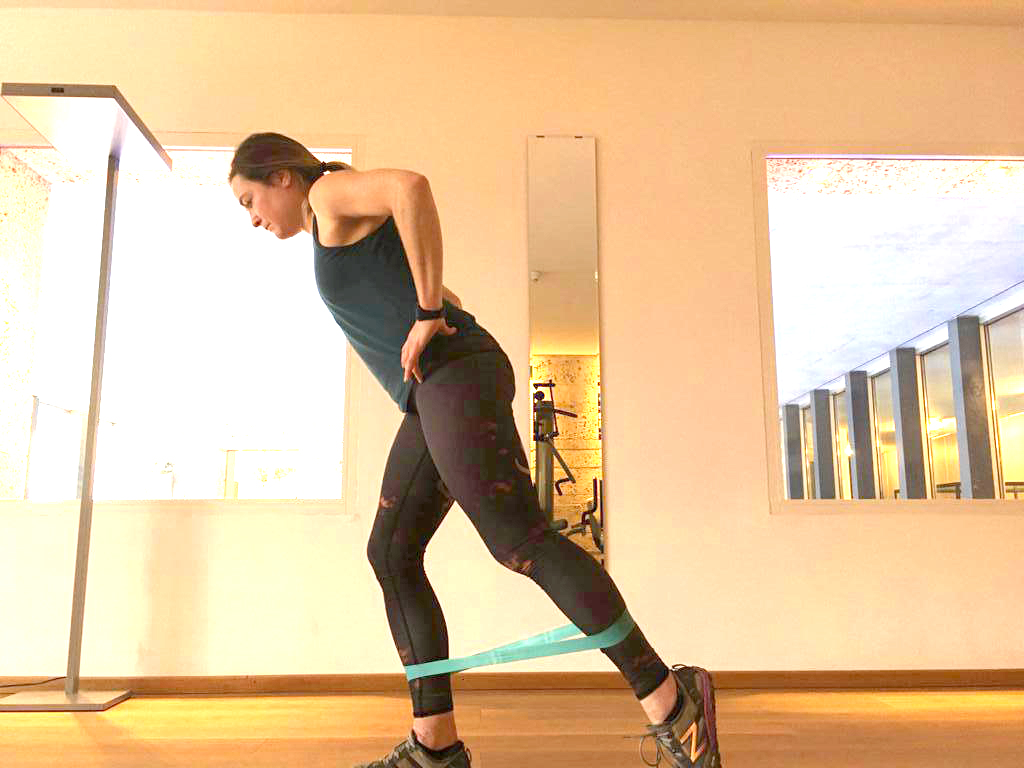
5a) Runners Reach
a): Try reaching forwards and down, keeping your static leg soft, but relatively straight. Watch the pelvis doesn’t open up and you keep your core switched on.
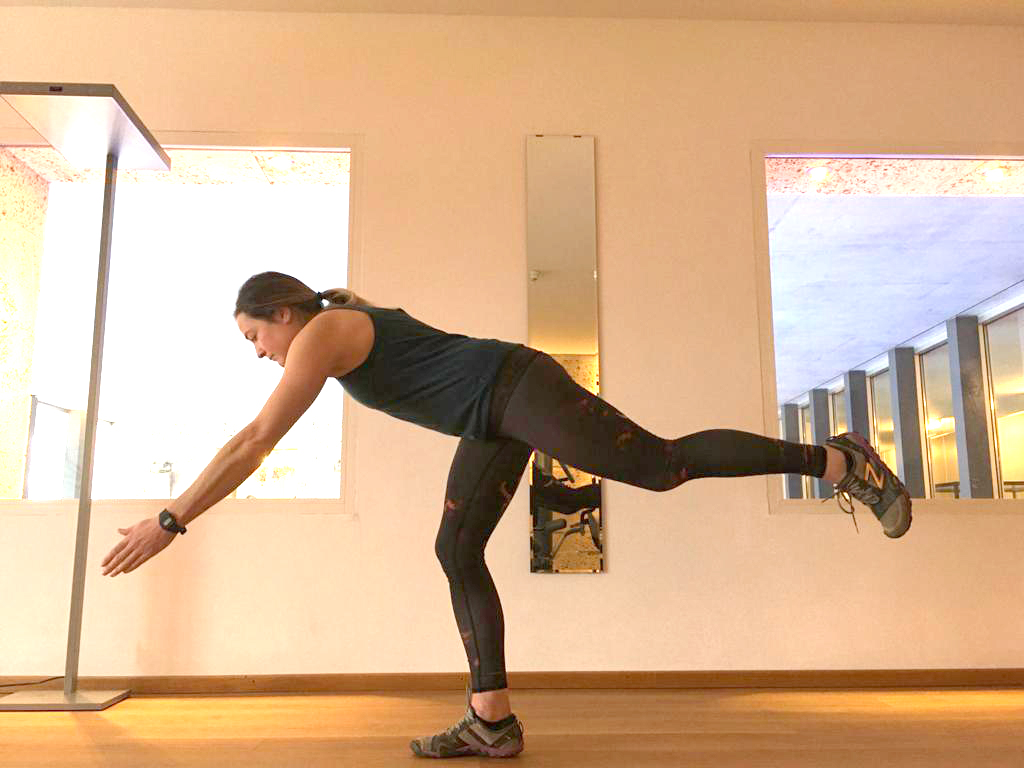
5b) Runners reach
b): from the position above, using your core bring your back leg up in front to a balanced single leg position. Try to use opposite arm to leg, to mimic a running type action that your brain is familiar with. If you really want to challenge yourself and get your balance system going, try with your eyes closed!!
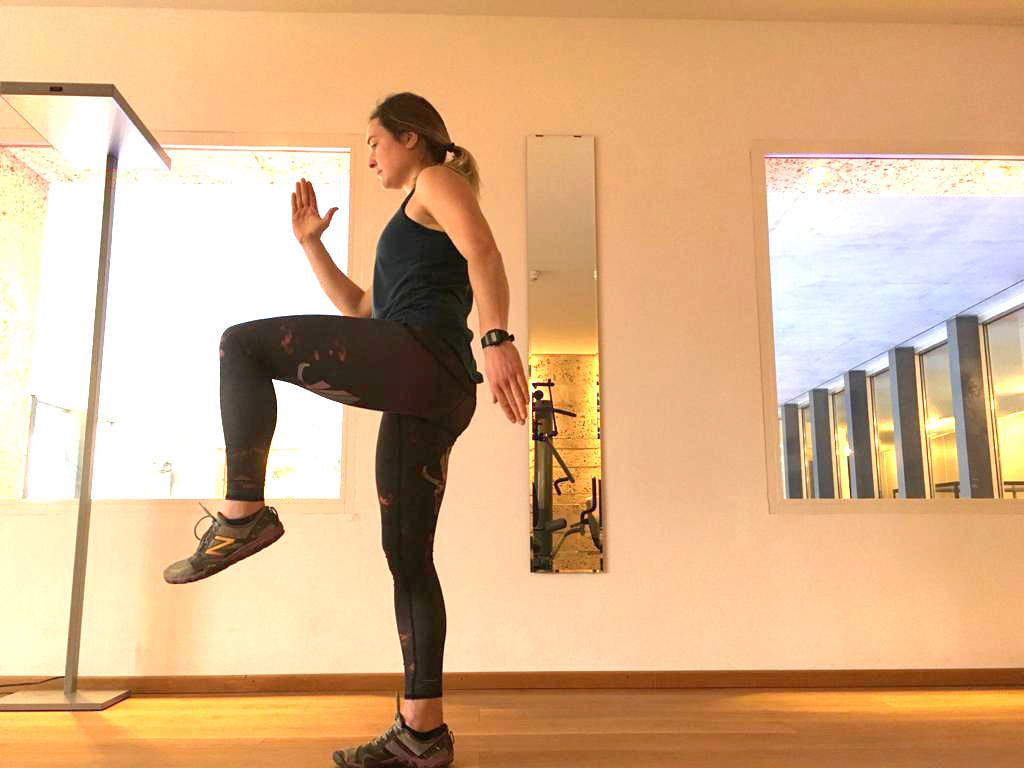
As mentioned above, these exercises are in no way prescriptive and ‘one size fits all’. But they are a good starting point. The release work is also very good post run or tour – try working a little longer and combining with some stretches. Have an experiment with the massage ball.
For me personally I get pretty tight in my upper back and shoulders from where I previously broke my back, and where carrying a heavy ABS bag leaves me quite sore.
So I try and get the massage ball into those spots.
Have fun, stay fit and healthy 🙂
And of course get in touch if you are looking for more specific advice.
Ski Season NZ Covid-19
How the Ski Season in New Zealand ran with Covid-19 restrictions
Colin Tanner 26th Sept 2020
As many of you may know, I spend my “summers” in New Zealand.
Obviously, summer in Europe is winter in NZ.
So in March 2020 when the Covid-19 pandemic really kicked in and France, like many other countries, shut down it’s ski resorts, I packed up my bags and headed to my family in New Zealand.
Like many of us we thought that after a few months is was all going to blow over…. how naive were we?
In NZ, about 3 months out from the start of the ski season, it became very apparent that the question about whether or not the 2020 NZ ski season could go-ahead was a very real question.
As I heard one Ski Area boss say – the goal of getting a covid-19 ski season up and running successfully became a bit of a shining light of hope for the whole country…and the global ski world was watching.
NZ’s Government implemented a 4 tier Alert Level system. With Level 4 being “full lockdown” and Level 1 being life as “normal” but with the international borders closed.
In the build-up to the winter season, NZ started dropping down from the initial Level 4, to Level 3. With hard work and collaboration of ski resort management, guidelines and operating protocols were written up that would allow ski resorts to open if, and only if, Alert Level 2 was achieved.
So the goal was clear, get to Level 2 and the lifts could turn!
As it turned out opening dates were delayed because of maintenance delays that were caused by full lockdown in Level 4.
Then the alert levels dropped from 3 to 2 and then to Alert Level 1, all before the revised opening dates of 26th June.
So we opened the season on alert Level 1 – no restrictions, no masks required, no distancing required.
But would there be any customers? The international borders were closed and there are normally a lot of Australians and other overseas visitors who come skiing in NZ.

Turns out that New Zealanders, and those that were already inside the borders, couldn’t leave the country, so they came skiing! There were some really busy days during school holidays when the resorts infrastructures (roads, car parks, access etc) reached maximum capacity and therefore naturally limited the number of skiers in each ski resort.
The resorts were short staffed – no international workers – and things were busy.
Then on the 11th August Covid came back! As of the 12th August the whole country was at Alert Level 2 – so all the protocols that were originally written up were rolled out.
Masks were required – interestingly enough a ski buff, or neck tube, or a scarf was considered a suitable mask.
Social distancing was required which meant limited numbers of people on a chairlift at any one time – although if you were in your own “bubble” then you could all get on a chairlift as normal.
Lift line queues became longer as minimum distances between people was required.
Ski School lessons were still OK, but again distancing was adhered to and face masks/covers were encouraged.
So on the snow you were outside, in vast open areas, and things worked well.
Inside buildings and spaces were some of the trickiest areas to make changes.
Tables spaced out, limited numbers of people allowed in any space.
Bad weather was going to pose a problem, the limit to the number of people in an area would still apply. So if a storm or bad weather came in then people would have to head home, they couldn’t just squeeze into a restaurant or cafe and ride it out.
As it turned out the weather was good for the most part and outside tables were popular.
Restaurants and bars were table service only, all payments were cashless.
In fact, whole ski resorts went cashless for the whole ski season – all payments were by contactless card.
After an initial few nervous days, the ski season at Alert Level 2 got into the swing of things, and we all found ways to make ourselves and the people around us feel comfortable and safe.
It was all new, and awkward to start with, but everyone found their comfort zone, and it worked well.
To be honest, the biggest thing was making yourself and those around you feel safe.
Skiing with Covid Restrictions
Patience and kindness was the order of the day.
Things took longer!
Longer to buy a pass, longer to find a table, longer to get on the lift, longer to buy a coffee.
Everything took longer, and everyone knew this, but at first, there were still frustrations, but soon your expectations adjusted to the reality of the situation.
At the end of the day it was better to be skiing, and have to wait in a longer lift queue, than to not be skiing at all.
The NZ season is nearing the end now, and on reflection I think it will be seen as a successful season, ran under difficult conditions.
But it did run.
As the European and Northern Hemisphere winters approach, I am taken back to those feelings that we had in NZ three months before the season here.
The worry and the fear, the overall uncertainty about going into uncharted waters.
Looking back, those fears were needed as it motivated everyone to rethink and to adjust, once those adjustments were made, and the season got running then it was OK.
a personal reflection on the NZ ski season 2020
It was more than OK, it was good!
Looking to Europe and the Northern Hemisphere winter season I am sure that the next two or three months will be full of fear, and worries, and uncertainty.
But once it has started and we see that it can work, then the passion and love for the mountain and winter sports can shine through.
We will find ways to make ourselves, and those around us, feel comfortable and safe.
Here is hoping that in late spring 2021 we can all look back at what has been a successful season, ran under different circumstances.
Colin Tanner
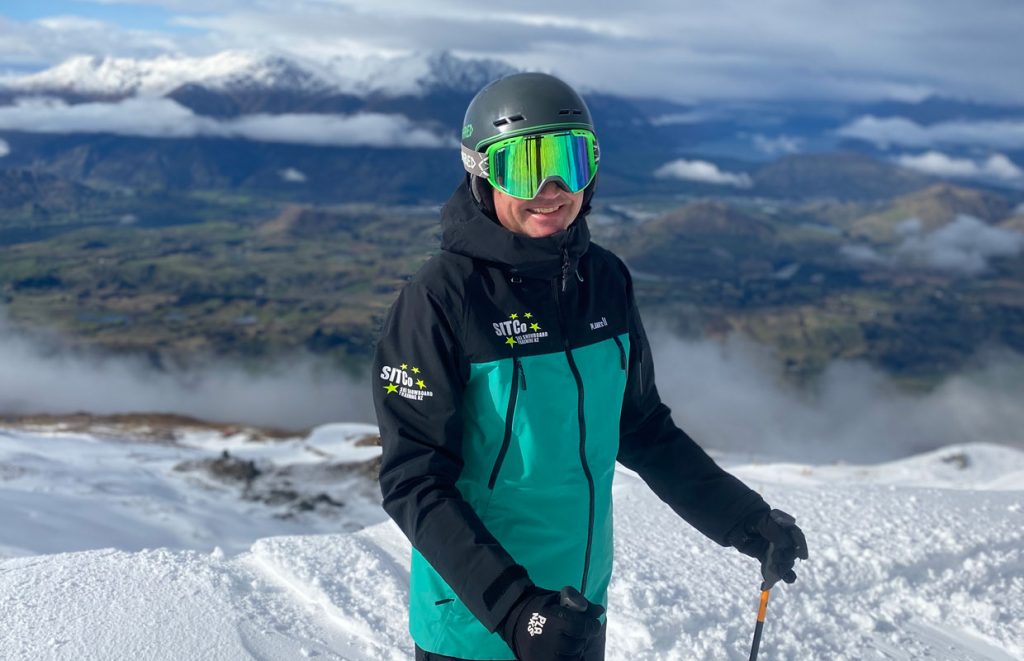
Kyrgyzstan Ski Touring 2020
Terry, Rich and a team of 6 clients recently returned from ski touring in Kyrgyzstan, this is part of their TDC Expeditions endeavours. Check it out for next January/February 2021!
The trip starts with the team meeting in Istanbul airport ready to fly together to Bishkek, the beautiful capital of Kyrgyzstan. A short (6 hours) transfer past the drainless lake Ysyk-kol leads to the sleepy ‘village’ at the upslopes of the Tesky-Ala mountains of the Northern Tien-Shan Range. Here are the base Yurts for the first 2 days of ski touring.
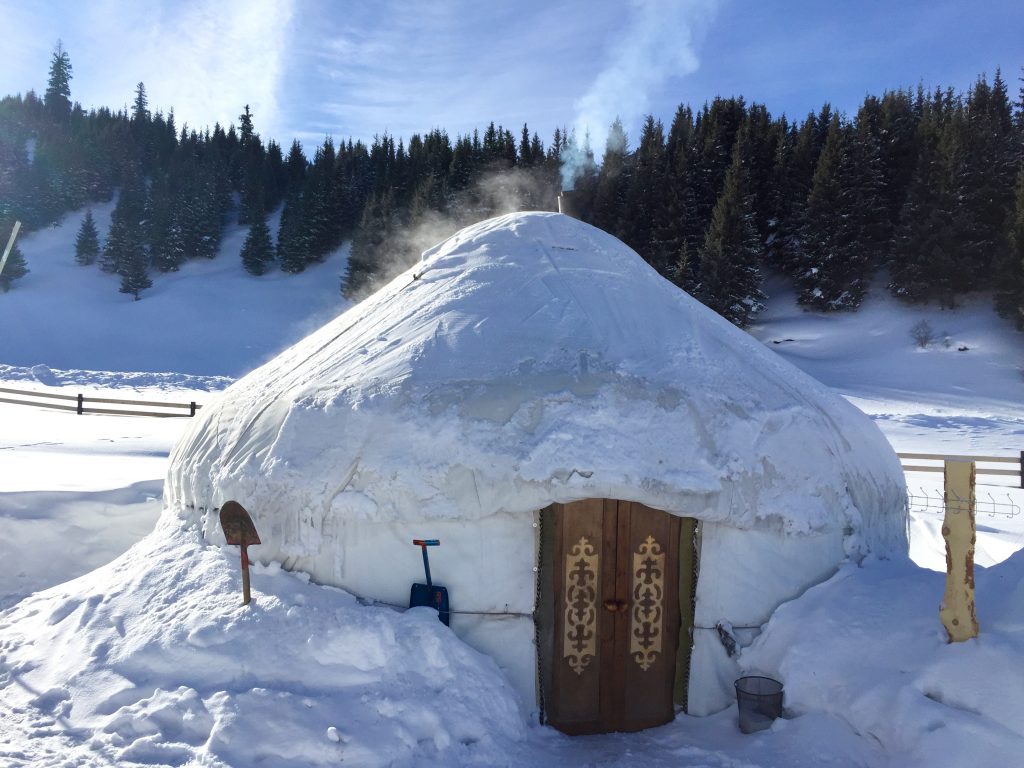
The terrain around the camp is gentle and sparsely forested. Perfect for an introduction to ski touring skills, familiarisation with the equipment, and acclimatisation. The snow is guaranteed to be cold and dry, a mixture of powder and old faceted crystals that ski beautifully.

Temperatures overnight of -15/-30 soon warm to -5 which is perfect for the daily ascension of about 350m, or 1.5 hours in the morning to a perfect spot to cruise the powder back to the yurts in time for lunch.
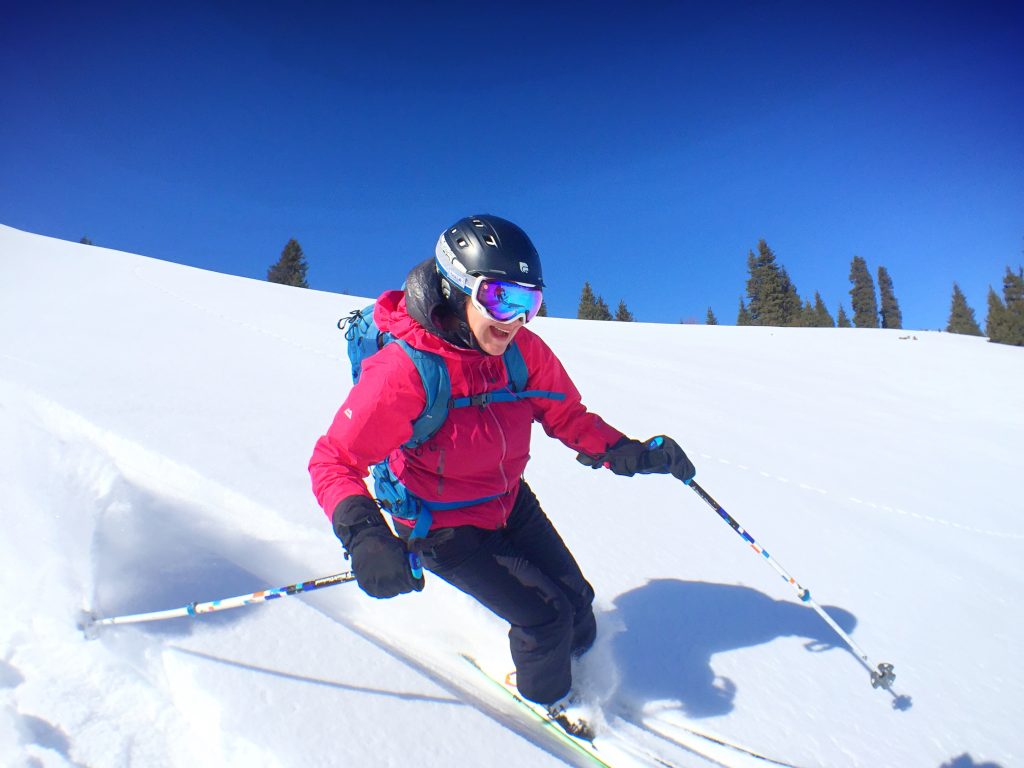
The afternoon holds a similar pattern, with usually an hour of peaceful uphill followed by a mind-blowing descent back to camp. It’s rare to see other tracks, and even more so to ski near them!
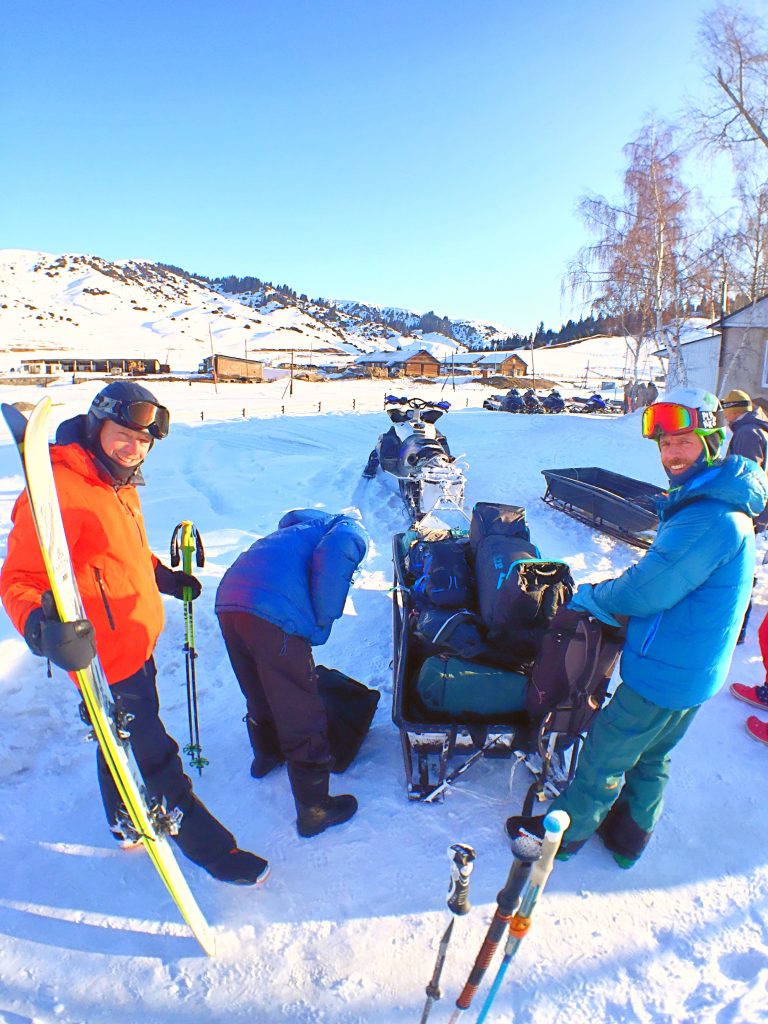
The advanced yurt camp is truly isolated and requires a 45-minute ski-doo commute to arrive. Passing incredible scenery along the way… but concentrate as ski-doo drag skiing is not for the faint-hearted!
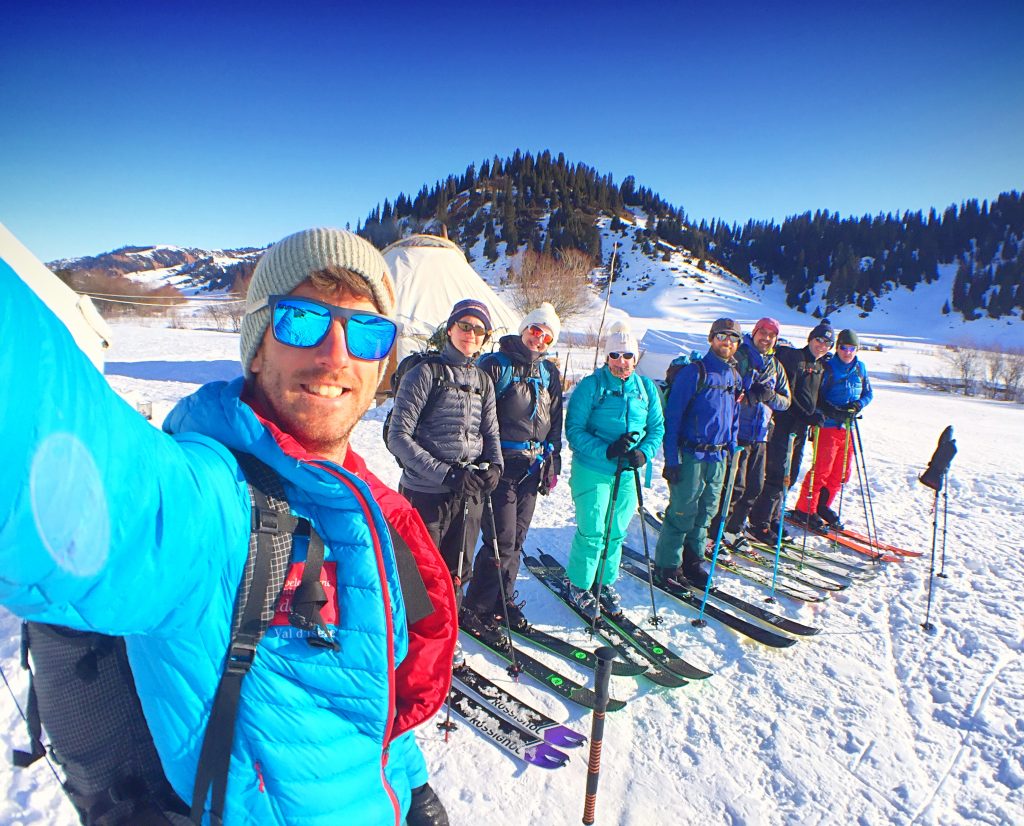
With 3 days out of signal/reception/wifi under the stars at the advanced camp, everyone becomes truly relaxed and collectively didn’t want to leave. The sauna provides the end of each day before dinner is served. 2 courses, including a soup/broth to start and then a mixture of different fusion cultured meals each night. The food is outstanding.
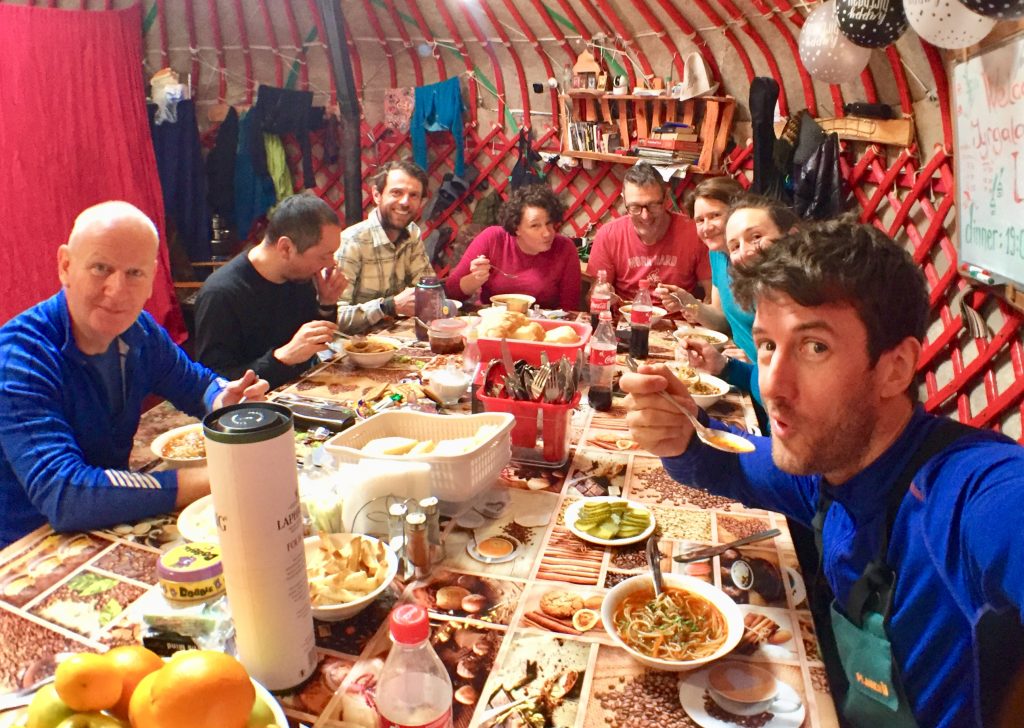
The evening’s entertainments involved Terry playing the guitar, Rich falling asleep playing cards, and the team drinking a tad too much fine whisky, rum or vodka… every night!
The trip finishes with a trip to the hot springs located near the central lake of Kyrgyzstan, an eye-opening stop to get superb lunch at a ‘motorway’ services, and then a night in the best hotel in Bishkek. The restaurant for the final meal has incredible feasts to share, this year involved 4 courses, and almost ordering the correct amount of food. Half the team could deal with the soured milk, half couldn’t bear it!
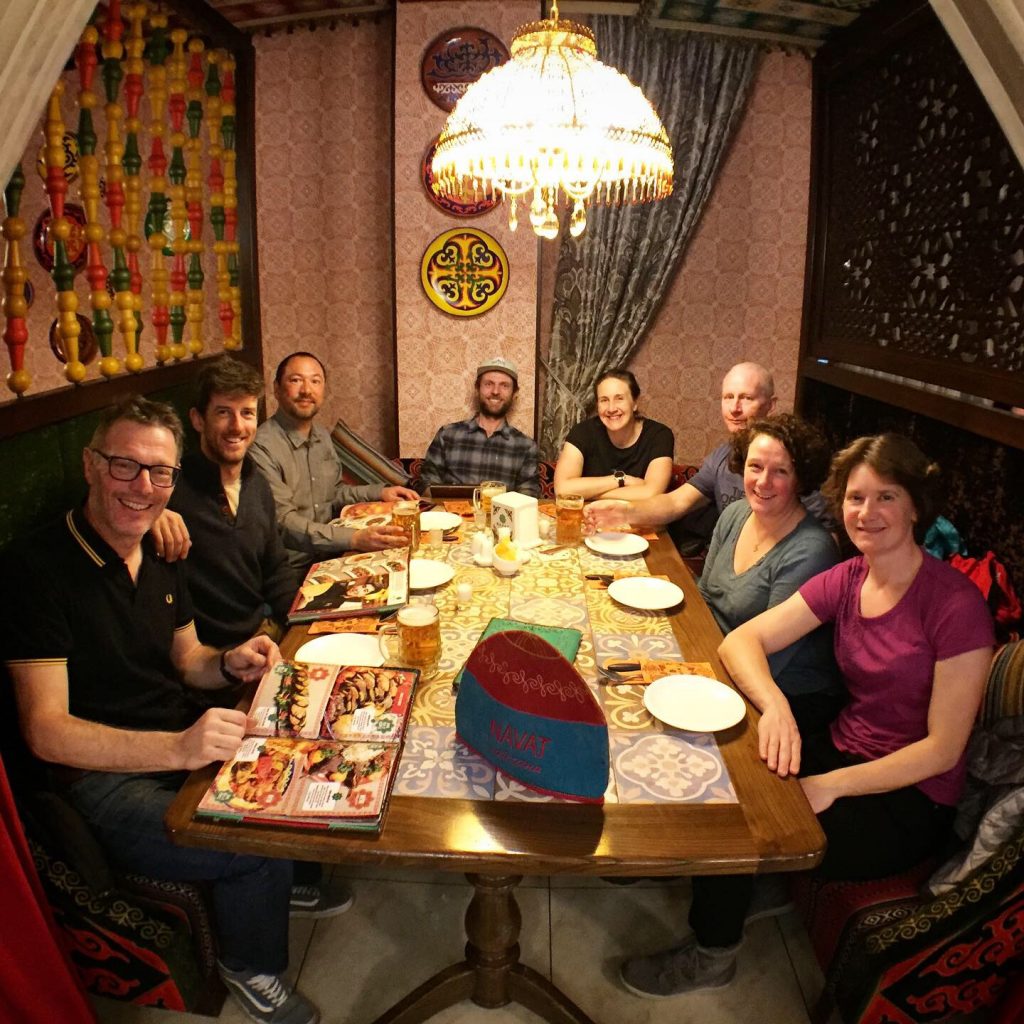
Thanks to everybody that came and made it such a special trip. We’re seriously looking forward to next year… and if you’re interested, check out the website for this trip or more.
Ski Touring Is The New Cool!
In recent seasons ski touring has become more and more popular.
What exactly is this ‘ski touring’ thing I keep hearing about? Is it for me? Well, you certainly don’t need to be an amazing expert skier, and you don’t even need to be that fit…
Let’s go back – a long way – to the origins of what we now call skiing. From relics and cave paintings we are fairly sure that skiing started as a way of transporting people around snowy mountains, going from village to village, or for hunting etc.
Walking in deep snow is tricky, walking on skis keeps you up on the snow and allowed people to transport themselves more easily.
Fast forward to modern skiing, we have chairlifts to get us up the hill, and modern skis with waxed bases that allow us to slide down the hill with grace and ease.
But what if you want to get access places where the chairlifts don’t go? You can walk!. There is an issue; if a ski slides down the hill, then when you try to walk up the hill the skis will keep sliding down the hill (backwards).
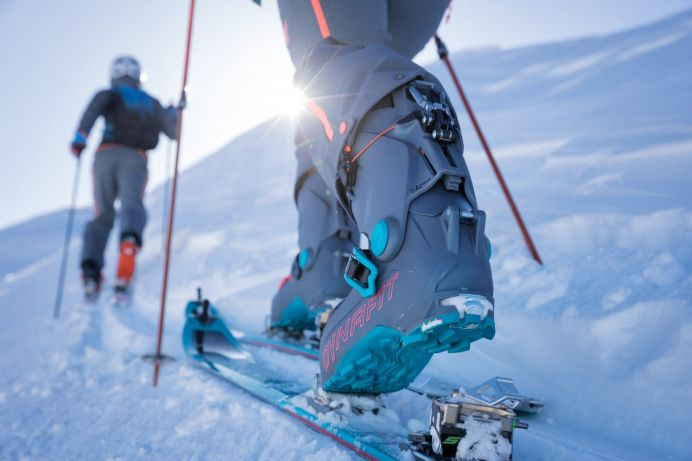
In modern skiing there has been a system to get around this issue for many years, it is called Ski Touring, or Ski Randonee, or Skin-ing.
Skin-ing was a name that came from when seal skins (modern-day “skins” are not made from seals!) were cut into the shape of the skis and tethered to the bottom of the skis. The knapp of the skin was put so that the hair ends were pointing backwards. So with skins on their skis, the skier can slide the ski forward, but it won’t slide backwards, this allows them to walk up gentle hills without sliding backwards while still being supported on top of the snow. Then when the skier gets to the top of where they wanted to go, the skins can be removed and the skier is able to ski down with their regular skis.
To make the action of walking easier, bindings were designed that would keep your heel locked down when you were skiing downhill but were able to be released at the heal for when you were walking uphill – the touring binding was born.
So to go ski touring all you needed was skis with touring bindings and skins. But as you can imagine walking uphill with your normal heavy ski boots on could be quite a drag. So ski touring boots have been developed, designed to be lightweight and suitable for walking.
All these things have been around in a recognisable modern format since the 1960’s and 70’s.
So why has it become the new cool?
Technology!!!
Fat skis – powder skis have opened up brave new worlds for all skiers to access off piste skiing.
New Pin and Frame touring bindings systems that are strong and very light.
Touring boots that allow freedom to walk up, and performance when skiing down.
Ski Touring was always about getting away from the crowded pistes and adventuring into new terrain. But there was always a play-off between light and practical equipment to walk up the hill, and having good strong performance equipment to enjoy the run back down again.
In recent years technology has improved in such a way that now skiers have skis, bindings and boots that allow the walk up to be efficient and the ski back down to be performance.
If you are a skier that wants to ski off piste then you will know the enjoyable feelings of skiing untouched powder. But as we know it all gets “skied out” after a snowfall.
Every bit of powder that can be accessed from the chair lift will get skied! But you know there is more, you can see it, but it is always in those harder to get to places.
This is when ski touring can be the solution, you can go on an adventure, get away from the madding crowds and enjoy those fresh lines.
A little bit of walking and new powder fields can be yours.
If you are keen to try out Ski Touring then TDCski run Introduction To Touring clinics – find out more…
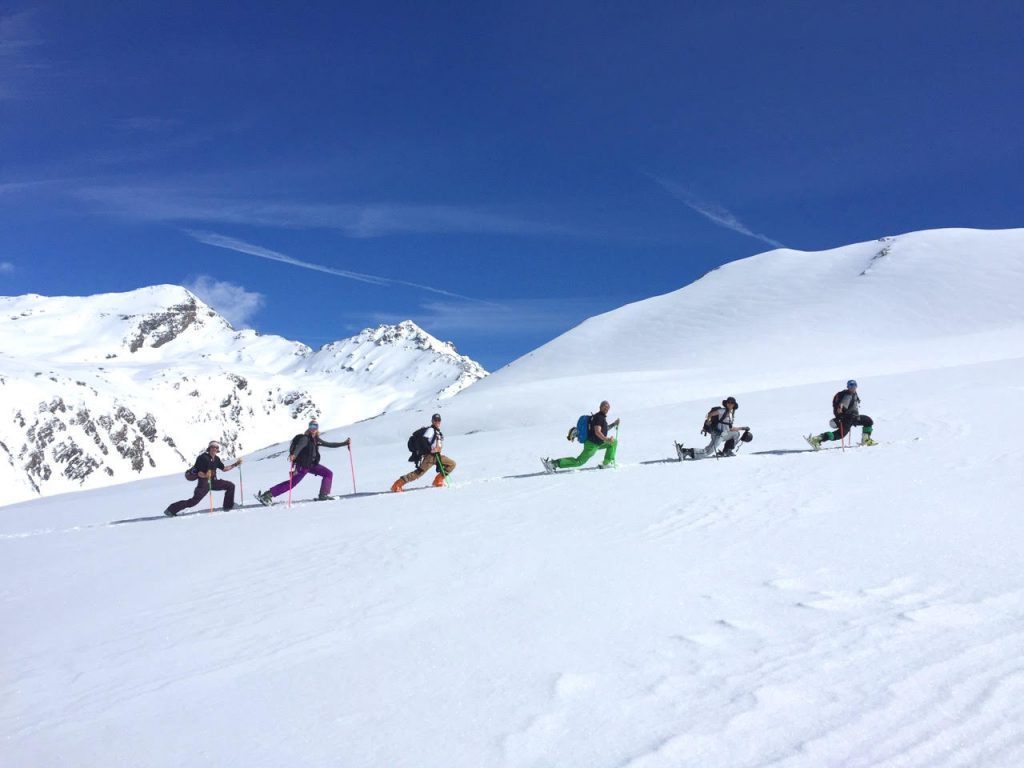
Ski Lessons or Ski Coaching?
What’s the difference?
Is there a difference between Ski Lessons and Ski Coaching?
At the start of every season, we do the rounds, meeting all the new staff in the ski shops, in the chalets etc. Lots of them know us from previous years but every year there are new faces. So, once again our job is to explain what it is that we do at TDCski, how are we different?
What is it that TDCski does that is different?
So I tell a story about a conversation that took place on a chairlift, that maybe did or didn’t actually happen. Whether it happened is not the point, the story helps answer our question.
The conversation is between me, an instructor, and a random friendly holidaymaker who has overheard my conversation, in English, with my client that day.
It goes like this…
“Excuse me, are you a Ski Instructor?”
“Yes I am.”
“I want to get better….but I don’t want to go to ski school.”
And that is it! Right there, that conversation convinced me and my like-minded colleagues to set up TDCski.
Here was a skier on a chairlift, with an obvious aspiration to improve but to them, the thought of going to “ski school” was just not going to cut it.
They wanted to take the skills they already had and they wanted to ski the mountain, be challenged and achieve new heights in their performance.
For them, the idea of Ski School came with connotations of standing in line and skiing one by one to be told what they were doing wrong.
Where’s the fun in that?
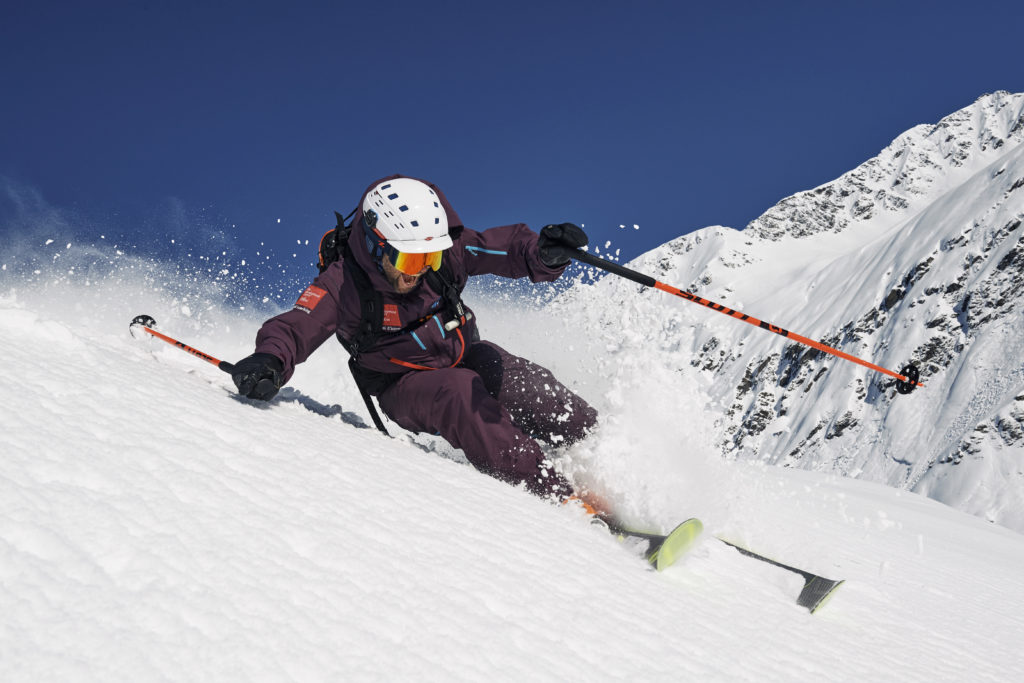
The funny thing is that a lot of “Ski Lessons”, run by good instructors, don’t have those negative aspects to them, but that remains the perception!
Giles, Paul, Phil and myself (founding four), talked about this and we realised that we already ran our ski lessons in a way that facilitated improvement and challenged the students. We used the tools that we had all learnt with BASI (British Association of Snowsport Instructors) and we made sure that our students really got to improve their performance. It was not just about technical issues, there were tactical and psychological approaches too (plus a few others but let’s not get too geeky!). We would keep students moving, we would give what were perceived as “tips” and we would set the environment to allow our students to practice and apply them. We kept things simple, but precise.
People liked it, it was safe, fun, positive, challenging.
People improved, did lots of skiing and had a good time.
People described it as Ski Coaching!!!!
Turns out our Ski Lessons were
So what did we do? Well in 2002 we stripped away all the words that implied those old, ski school connotations.
At TDC – The Development Centre – there were no more instructors, we were coaches; there were no more lessons, there were sessions and clinics; we weren’t a Ski School, we were a training and Development Centre.
…turns out that nobody searches for “ski coaching” not even people who want it!
This is still our ethos today, but with the advent of the internet it turns out that nobody searches for “ski coaching” not even people who want it! So all the old school words had to come back in especially on the website.
But still to this day, we call our-selves coaches and we run clinics.
The difference between “Ski Lesson” and “Ski Coaching” is at the heart of everything that we do.
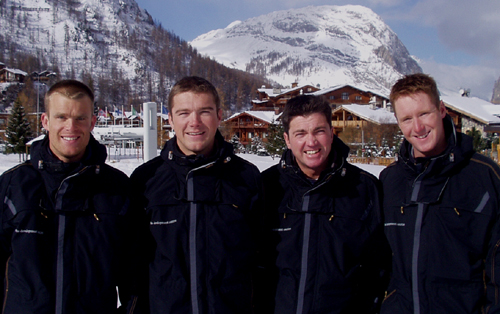
by Colin Tanner – Ski Coach!
Paul, Giles, Colin and Phil started The Development Centre in Val d’Isere 2002 www.tdcski.com
TDCski Ski School’s Highly Featured in List Of Best Ski Schools In France
Ridestore Magazine Press Release, 29th November 2019
TDCski Ski Schools have been featured as some of the best ski schools in Val d’Isere, Tignes and Meribel by Ridestore Magazine. Ridestore compiled a mega ultimate list of best ski schools in France for the 2019/2020 season, after all, the countdown is on to many of us ski and
snowboard lovers, hitting the slope! The team at Ridestore thought it was about time someone put together a list of all the ski schools in the best and busiest resorts in France to make life a little easier for those frantically googling.
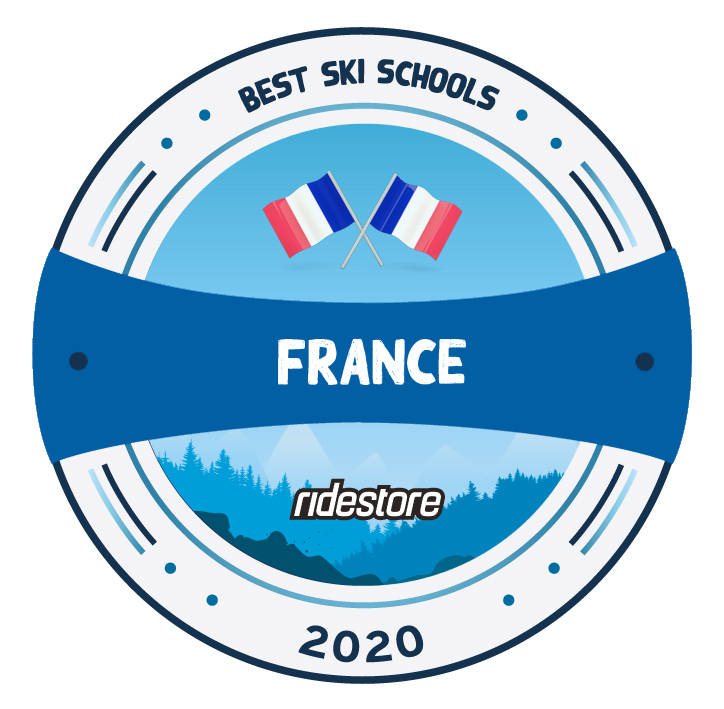
This list was created to try and take a little of the stress out of selecting the right ski school for you.
It doesn’t matter whether you are a first-time skier, an intermediate looking to rid yourself of bad habits or a seasoned rider who loved to learn the latest tricks and tips, it’s vital you find the right fit for you. Brits have been supporting French ski schools for decades and without any signs of stopping, they love backing ski schools both big and small, always looking for the right tuition that offers value for money and quality and experienced instructors.
This ultimate list of the best ski schools rewards the schools who put their best foot (or ski boot) forward at all times and ensure first-time and novice skiers and snowboarders, well riders of all levels have a fantastic experience on and off the slopes! The right instructor and ski school experience can make or break a trip after all and our annual (or if you are lucky, bi-annual) ski trip is sacred and maximising your time is essential.
“Searching for a ski school, particularly in France where there are so many in each resort, can be a little stressful, only adding to the to-do list further when booking a mountain adventure. Then if you want to advance your skills, in off-piste, touring or more specific niches, finding the right fit ski school wise, can be a challenge.”
stated Angelica Sykes from Ridestore Magazine.
continued Angelica Sykes.
“There are lots of things to consider when booking a ski holiday, and choosing the right ski school is one that always proves challenging. Therefore with this list, we wanted to make the booking process that bit easier, so you can get on with planning the rest of your trip”
To read the full entry about TDCski Ski School, please visit Ridestore Magazine.
